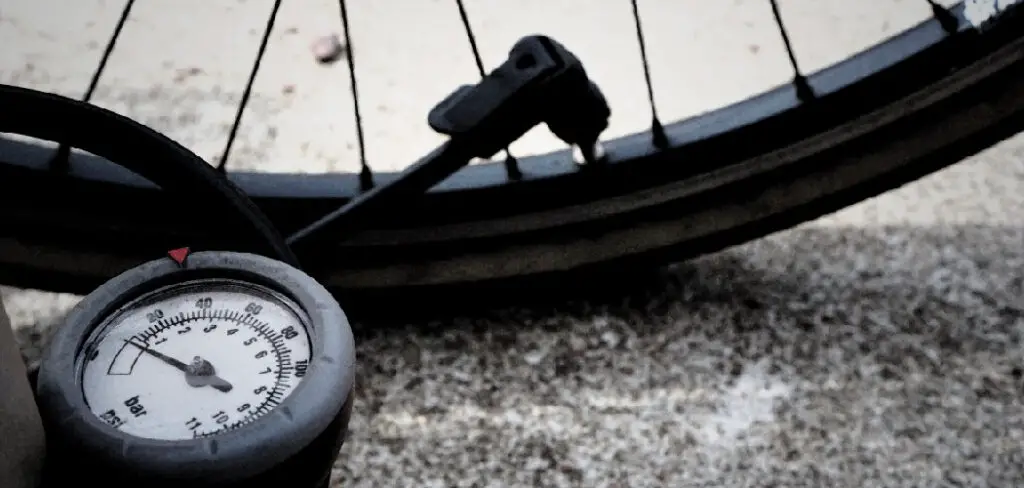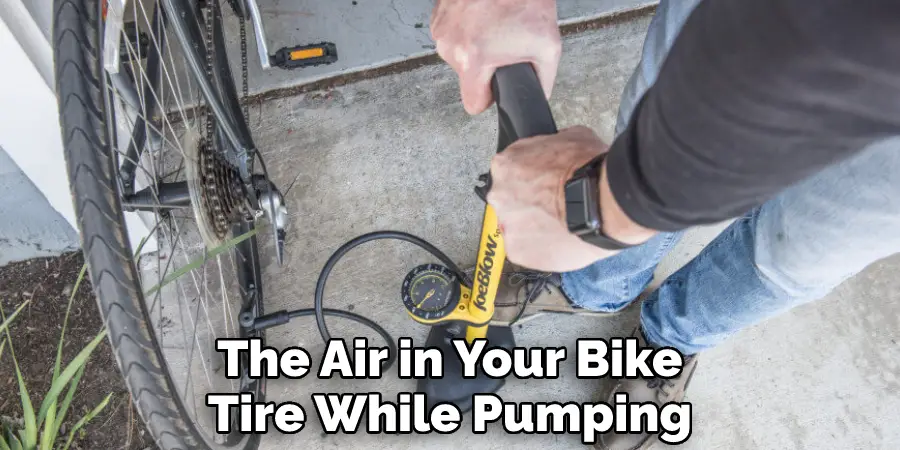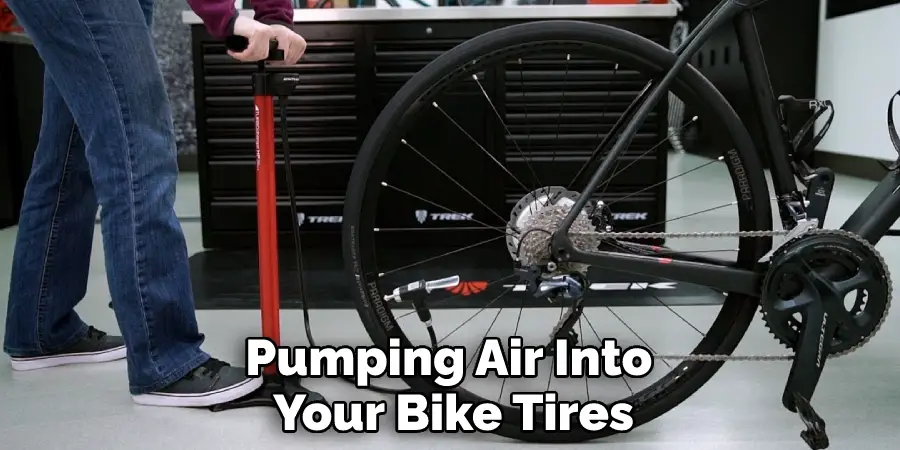Do you find yourself stranded on the side of the road, having just realized that your bike tire is flat and you have no pump? You may have decided it would be a good idea to leave your bulky pump at home, but now that you're stuck with a deflated tire, it feels like an unwise decision. Don't worry. We've all been there at least once.
It may sound like an impossible task. Thankfully, there are ways to use everyday items around you to remedy this situation and get your bike back up and running in no time! In this blog post, we will discuss alternative methods for pumping up flat bicycle tires so that you can get back on the roads easily—no extra equipment necessary!
Keep reading to learn how to pump a bicycle tire without a pump!

To begin you will need a few supplies to get started. You will need the following:
Once you have gathered these supplies, you can start pumping your bicycle tire without a pump.
Start by laying the piece of cardboard or other sturdy material on a flat surface. Use your hands or a small tool to make a hole in the center of the cardboard that is just large enough for your bike tire valve. Be careful not to rip the cardboard.
Next, carefully insert your bike tire valve into the hole in the cardboard. Make sure to press firmly so that it is securely fastened. If your bike tire has an air leak, you may need to secure it with a piece of a rubber band or duct tape around the valve.
Now that your bicycle tire valve is securely fastened use the empty water bottle to fill up your bicycle tire with air. Hold the bottle upright and press down on it, squeezing out small amounts of air into your bike tire until it reaches the desired pressure. You can also use two bottles to achieve even faster results!
To make sure that you don't lose any of the air in your bike tire while pumping it up, check for any leaks as you go along. Simply place a finger over the valve and move it around to see whether there are any cracks or holes. If you find any, apply another piece of a rubber band or duct tape to eliminate the air leak.

Once your bike tire is full of air, keep pumping! Continue filling up your bicycle tire until it reaches the desired pressure level. Remember to check for leaks periodically as you go, and add more air if necessary. It will likely take a few rounds of filling up and releasing air to achieve the optimal pressure level.
Once your bicycle tire is fully inflated, give it a test ride! Be sure that it feels sturdy and balanced before riding off into the distance. If you notice any issues with how your bike rides, continue pumping in small amounts of additional air until the problem is resolved.
If your bicycle tire starts to lose pressure after a few hours of riding, simply repeat this process as needed until you reach your desired level of inflation and stability. This can be done using the same cardboard-and-water bottle "pump" or by finding an actual pump if one is available in your area.
In order to keep your bike running smoothly for years to come, it's important that you maintain your bicycle tire regularly by checking for air leaks, pumping it up with air whenever necessary, and replacing damaged parts as needed. This simple step will help ensure that you are always prepared to ride your bike confidently, no matter where the road takes you.
To ensure that your bike tire stays fully inflated and ready to tackle any challenge, regularly pump it up with air as needed. Set a reminder each week or month to check on the status of your bicycle tire and make any necessary adjustments. This will help keep you riding freely for years to come!
In addition to properly pumping up your bicycle tire, it's important to take care of your bike in other ways. This includes regularly checking for loose bolts and parts, cleaning the chain and gears as needed, and maintaining proper air pressure levels in both the tires and inner tubes. With proper maintenance, your bike will be ready to take on any challenge for years to come!
To prevent your bike tire from losing air pressure and becoming damaged, it's important that you avoid exposing it to excessive heat. This means avoiding storing your bike in direct sunlight or near heat sources, such as a radiator or space heater. Additionally, be sure to wipe away any debris or water that gets on your bike wheel to keep it functioning properly for years to come.
By following these simple tips, you can ensure that your bicycle tire stays fully inflated and in great shape for many future miles!

1. If you don't have a pump, you can use an air compressor or a manual pump to get the air into your bicycle tire.
2. Another option is to blow into the tire's valve to inflate it. You may need to do this several times to fully fill it up.
3. You can also try rolling a balloon across your tire's surface until you hear air escaping from it. This will help add some extra pressure inside your tire, helping it to inflate more quickly.
4. If you're really stuck without any other options, you can always try using your mouth! Just be sure to wear gloves before attempting this method, as it can be a bit gross and messy.
5. Last but not least, you may also try using a plastic bag or other pieces of material to help get some extra air into your tire. Simply put your mouth on one end of the bag and blow hard until the air starts flowing through the tube.
With these tips and tricks, you should be able to pump up your bicycle tires without any extra equipment successfully!
One option for pumping air into your bike tires without a traditional pump is to use a ball pump. This type of pump typically has a smaller opening that is designed to fit tightly around the valve of a bicycle tire, allowing you to easily inflate it using either mouth-to-mouth inflation or compressed air from an external source.
However, if you do not have access to a ball pump or another type of manual air compressor, other options are still available. For example, you can try blowing into the valve directly by sealing your lips over it and exhaling forcefully. This may require multiple attempts to fill up your tire fully, but it can be an effective way to get some extra pressure inside your bicycle tires.
Ultimately, whether you use a ball pump or another manual inflation device, plenty of options are available to help you put air into your bike tires without a traditional pump. Just be sure to keep these tips in mind and take good care of your bike to stay in great shape for years to come!

Though it may seem daunting, pumping up a bicycle tire without a pump is entirely possible with the right tools and technique. With a little patience and practice, anyone can do it. And once you know how to pump a bicycle tire without a pump, you'll be able to ride your bike anytime, anywhere - even if there's no pump around.
So, there you have it! These are the steps you need to take in order to pump a bicycle tire without a pump. Just remember to be careful and take your time so that you don't damage the bike or injure yourself. And if all else fails, you can always just buy a pump.
Hopefully, this information has been helpful and will allow you to get out and enjoy your bike, no matter the circumstances. Get out there, have fun, and stay safe!